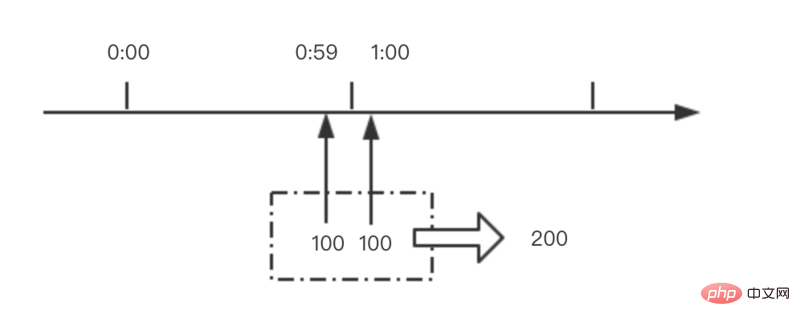 Backend Development
Backend Development PHP Tutorial
PHP Tutorial Ruby on rails, Passenger and Nginx environment construction under Ubuntu14.04
Ruby on rails, Passenger and Nginx environment construction under Ubuntu14.04I’ve always heard that rubyonrails is very efficient, so I tried it a while ago, and now I’m reviewing it rails Environment Building process. I am using ubuntu14.04LTS. After reading various posts and some tutorials on the Internet, it seems that it is not recommended to do it under windows rails development, generally linux and macos .
preliminary work
during installation railsBefore the environment, there are some necessary The package needs to be installed to avoid various missing library problems in subsequent installations (see http://ihower.tw/rails3/). Execute the following instructions:
$sudo apt-get install build-essential bison openssl libreadline6libreadline6-dev curl git-core zlib1g zlib1g-dev libssl-devlibyaml-dev libsqlite3-0 libsqlite3-dev sqlite3 libxml2-devlibxslt-dev autoconf libc6-dev
When installed using apt-get Sometimes you encounter unableto The problem of locate can generally be solved by updating:
$sudo apt-get update
If update cannot be executed either, "isthe" appears Internet authenticated?" and other prompts, it is likely that the network is limited. I discovered this problem when using the hotel's network...
RVMInstallation
RVM is a command line tool that provides A convenient multi-version rubyenvironment management and switching, which can bring great convenience to you learning ruby/rails Of course, you don’t have to use it . rvm, but I personally prefer to use rvm.
To install rvm you need to use curl, which has already been installed. Then follow rvm Official website instructions for installation , very simple, just execute two commands:
$ gpg --keyserver hkp://keys.gnupg.net --recv-keys D39DC0E3
$ curl -sSL https:/ /get.rvm.io | bash -sstable
After installation is complete, run: $source ~/.rvm/scripts/rvm
This completes the installation of rvm. It can be run by running $ rvm -v to check if rvm is installed successfully.
Install with rvmruby
Run $rvm install 2.0.0 to install ruby2.0.0 version. You can install the corresponding version according to your needs. If Errorrunning occurs 'requirements_debian...' error, you can run $rvm autolibs disable first and then install it. If all the packages have been installed in step 1, then the installation should be successful here, otherwise the error missingxxx will appear.
Ruby version settings
RVM can be used to install multiple versions ruby, so if the same If there are multiple versions of ruby installed on a computer, you need to specify which version of ruby to use. Available$rvm 2.0.0 --default command to specify the default version (here is the 2.0.0 version).
Attention, for ubuntuitsterminalreal gnome-terminal, so it will appear RVMis not a function error, you need to open the terminalEdit->profile->preferences->Titleand Command,selectRun command as a loginshell. Close the terminal and reopen the terminal to run the rubyversion setting command. For details, please see: https://rvm.io/integration/gnome-terminal
- Installation
rails
rails, you can install the RVMRuby to the domestic Taobao Mirror Like serverhttp://ruby .taobao.org/, otherwise it will not respond for a long time and cannot be installed:
$gemsources --remove https://rubygems.org/
$gemsources -a https://ruby.taobao.org/
$gemsource s -l
***CURRENT SOURCES ***
Use
rvm Set accordingly ruby/rails of gemset. If we want to use the 2.0.0 version of ruby and the 4.1.8 version of rails carried out combination, you can set a gemset environment for it. The specific operations are as follows: $rvm use 2.0.0
(using 2.0.0 version of ruby) $rvm gemset create rails418
(Create a named rails418 gemset, the name can be arbitrary) $gem install rails [--version=' 4.1.8'] (Install rails, the following version parameter is optional, if not filled in, the latest version of will be installed rails. If it appears during installationunableto.
For errors such as convert "/x89" from ASCII to UTF8, you can run $gem install rdoc and $gem
rdoc --all --overwrite to solve) $rvm use 2.0.0@rails418 –default(will ruby2.0.0 and rails4.1.8 combined gemset as the default gemset) can be used$rvm gemset list to see which gemsetenvironments you have set, the same, $rvm
list can check which versions of ruby are installed. We may ask, if I have multiple rails projects, each project requires a different environment, then I need to switch manually every time I switch projects gemsetenvironment? In fact, we can create a .rvmrc file in the root directory of each project, and write in it for example rvmuse
2.0.0 @rails418 command to specify the gemset environment used. In this way, every time we enter this directory, we will switch to this environment. Deployment of Rails passenger is a webapp
server, nginx is a high-performance HTTP and reverse proxy server. There are actually several software available for deployment, and you can choose by yourself. First install passenger: $gem
After install passenger, use the rvmsudo command to install the module with passenger nginx: $ rvmsudopassenger-install-nginx-moduleThis waynginx The default installation path is /opt/nginx , modify /opt/ nginx/conf/nginx.conf file to specify the root directory as the rails project's public directory. Then start nginx:$ sudo /opt/nginx/sbin/nginxThis way you can use your own rails Project . Using this method to install passenger is very convenient. Nginx is not like apache, apacheWhen a module is needed, you only need to add the module to the configuration file and restart. However, nginx can only be compiled and installed after configuring the required modules. Once the installation is completed, no more modules can be added. So if you want to install it separately, you need to go online to check how to configure nginx and passenger. For separate installation, how to configure nginx so that it can support passenger, here is the official reference document address of passenger: https://www.phusionpassenger.com/documentation/UsersguideNginx.htmlAs for how to add nginx to the service and start it up, the following is givenhttp:// A script on www.nginx.cn/204.html: #!/bin/sh
DESC="nginxdaemon"
NAME=nginx DAEMON=/opt/nginx/sbin/$NAME CONFIGFILE=/opt/nginx/conf/$NAME.conf PIDFILE=/opt/nginx/ logs/$NAME.pid SCRIPTNAME=/etc/init.d/$NAME set -e
[-x "$DAEMON" ] || exit 0
do_start(){
$DAEMON -c $CONFIGFILE || echo-n "nginx already running"
} do_stop(){
kill -INT `cat $PIDFILE` ||echo -n "nginx not running"
} do_reload(){
kill -HUP `cat $PIDFILE` ||echo -n "nginx can't reload"
} case "$1" in
start)
echo -n "Starting $DESC:$NAME"
do_start
echo "."
;;
stop)
echo -n "Stopping $DESC:$NAME"
do_stop
echo "."
;;
reload|graceful)
echo -n "Reloading $DESCconfiguration..."
do_reload
echo "."
;;
restart)
echo -n "Restarting$DESC: $NAME"
do_stop
do_start
echo "."
;;
*)
echo "Usage: $SCRIPTNAME{start|stop|reload|restart}" >&2
exit 3
;;
esac exit0 Save this script as a new file /etc/init.d/nginx and you can use it later sudoservice
nginx start/stop/restart to operatenginx service. Given below is how to uninstall ruby, Instructions for gemset: Uninstall a ruby Version: $rvm
remove 2.0.0 Clear a gemset of the used gem, and want to reinstall all gem: $rvm gemset empty 2.0.0 @rails418 Delete a gemset : $rvm
gemset delete rails418
The above introduces the environment construction of Ruby on rails, Passenger and Nginx under Ubuntu 14.04, including the relevant content. I hope it will be helpful to friends who are interested in PHP tutorials.
 内存飙升!记一次nginx拦截爬虫Mar 30, 2023 pm 04:35 PM
内存飙升!记一次nginx拦截爬虫Mar 30, 2023 pm 04:35 PM本篇文章给大家带来了关于nginx的相关知识,其中主要介绍了nginx拦截爬虫相关的,感兴趣的朋友下面一起来看一下吧,希望对大家有帮助。
 nginx限流模块源码分析May 11, 2023 pm 06:16 PM
nginx限流模块源码分析May 11, 2023 pm 06:16 PM高并发系统有三把利器:缓存、降级和限流;限流的目的是通过对并发访问/请求进行限速来保护系统,一旦达到限制速率则可以拒绝服务(定向到错误页)、排队等待(秒杀)、降级(返回兜底数据或默认数据);高并发系统常见的限流有:限制总并发数(数据库连接池)、限制瞬时并发数(如nginx的limit_conn模块,用来限制瞬时并发连接数)、限制时间窗口内的平均速率(nginx的limit_req模块,用来限制每秒的平均速率);另外还可以根据网络连接数、网络流量、cpu或内存负载等来限流。1.限流算法最简单粗暴的
 nginx php403错误怎么解决Nov 23, 2022 am 09:59 AM
nginx php403错误怎么解决Nov 23, 2022 am 09:59 AMnginx php403错误的解决办法:1、修改文件权限或开启selinux;2、修改php-fpm.conf,加入需要的文件扩展名;3、修改php.ini内容为“cgi.fix_pathinfo = 0”;4、重启php-fpm即可。
 nginx+rsync+inotify怎么配置实现负载均衡May 11, 2023 pm 03:37 PM
nginx+rsync+inotify怎么配置实现负载均衡May 11, 2023 pm 03:37 PM实验环境前端nginx:ip192.168.6.242,对后端的wordpress网站做反向代理实现复杂均衡后端nginx:ip192.168.6.36,192.168.6.205都部署wordpress,并使用相同的数据库1、在后端的两个wordpress上配置rsync+inotify,两服务器都开启rsync服务,并且通过inotify分别向对方同步数据下面配置192.168.6.205这台服务器vim/etc/rsyncd.confuid=nginxgid=nginxport=873ho
 如何解决跨域?常见解决方案浅析Apr 25, 2023 pm 07:57 PM
如何解决跨域?常见解决方案浅析Apr 25, 2023 pm 07:57 PM跨域是开发中经常会遇到的一个场景,也是面试中经常会讨论的一个问题。掌握常见的跨域解决方案及其背后的原理,不仅可以提高我们的开发效率,还能在面试中表现的更加
 nginx部署react刷新404怎么办Jan 03, 2023 pm 01:41 PM
nginx部署react刷新404怎么办Jan 03, 2023 pm 01:41 PMnginx部署react刷新404的解决办法:1、修改Nginx配置为“server {listen 80;server_name https://www.xxx.com;location / {root xxx;index index.html index.htm;...}”;2、刷新路由,按当前路径去nginx加载页面即可。
 nginx怎么禁止访问phpNov 22, 2022 am 09:52 AM
nginx怎么禁止访问phpNov 22, 2022 am 09:52 AMnginx禁止访问php的方法:1、配置nginx,禁止解析指定目录下的指定程序;2、将“location ~^/images/.*\.(php|php5|sh|pl|py)${deny all...}”语句放置在server标签内即可。
 Linux系统下如何为Nginx安装多版本PHPMay 11, 2023 pm 07:34 PM
Linux系统下如何为Nginx安装多版本PHPMay 11, 2023 pm 07:34 PMlinux版本:64位centos6.4nginx版本:nginx1.8.0php版本:php5.5.28&php5.4.44注意假如php5.5是主版本已经安装在/usr/local/php目录下,那么再安装其他版本的php再指定不同安装目录即可。安装php#wgethttp://cn2.php.net/get/php-5.4.44.tar.gz/from/this/mirror#tarzxvfphp-5.4.44.tar.gz#cdphp-5.4.44#./configure--pr


Hot AI Tools

Undresser.AI Undress
AI-powered app for creating realistic nude photos

AI Clothes Remover
Online AI tool for removing clothes from photos.

Undress AI Tool
Undress images for free

Clothoff.io
AI clothes remover

AI Hentai Generator
Generate AI Hentai for free.

Hot Article

Hot Tools

Zend Studio 13.0.1
Powerful PHP integrated development environment

EditPlus Chinese cracked version
Small size, syntax highlighting, does not support code prompt function

Dreamweaver Mac version
Visual web development tools

Atom editor mac version download
The most popular open source editor

mPDF
mPDF is a PHP library that can generate PDF files from UTF-8 encoded HTML. The original author, Ian Back, wrote mPDF to output PDF files "on the fly" from his website and handle different languages. It is slower than original scripts like HTML2FPDF and produces larger files when using Unicode fonts, but supports CSS styles etc. and has a lot of enhancements. Supports almost all languages, including RTL (Arabic and Hebrew) and CJK (Chinese, Japanese and Korean). Supports nested block-level elements (such as P, DIV),





